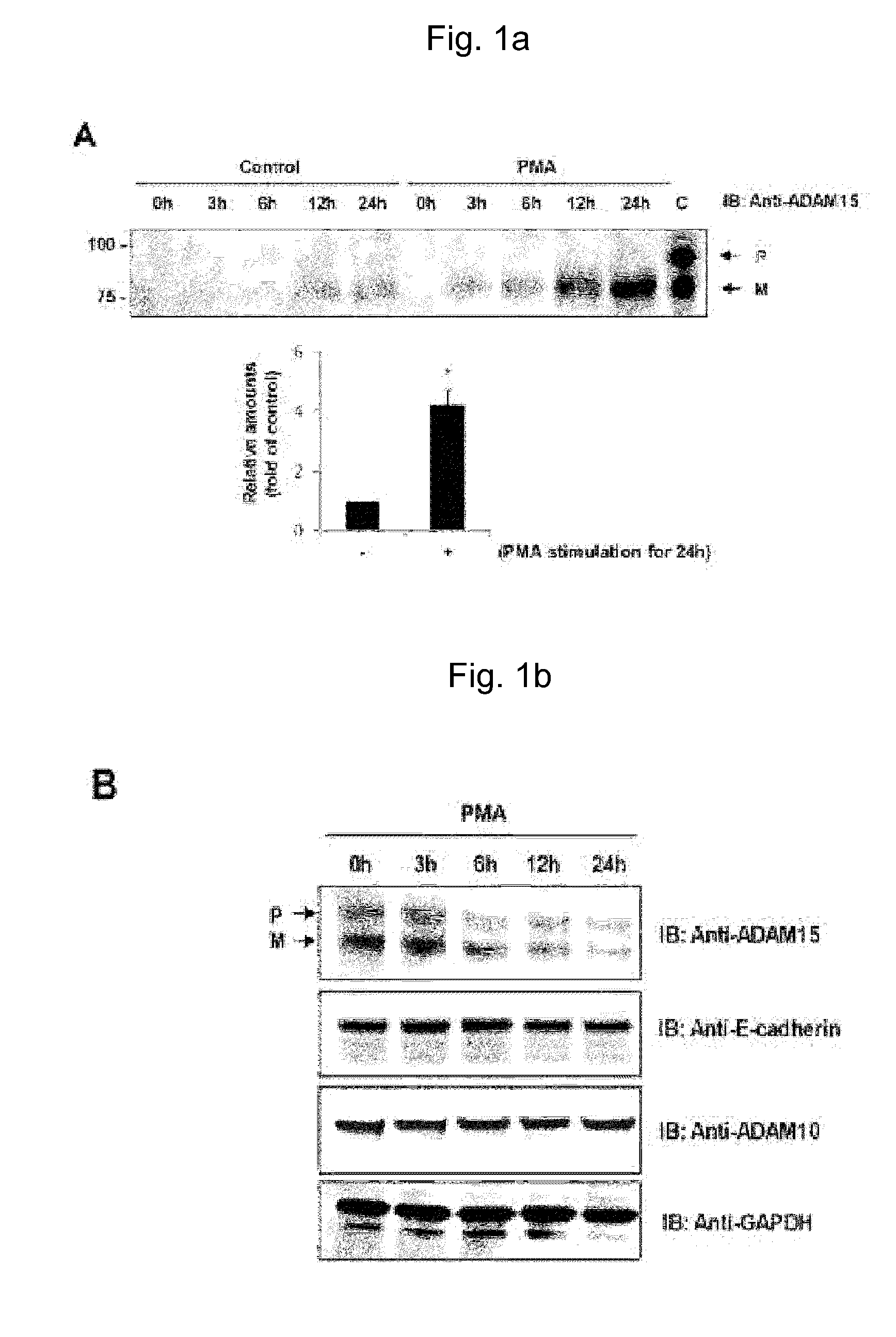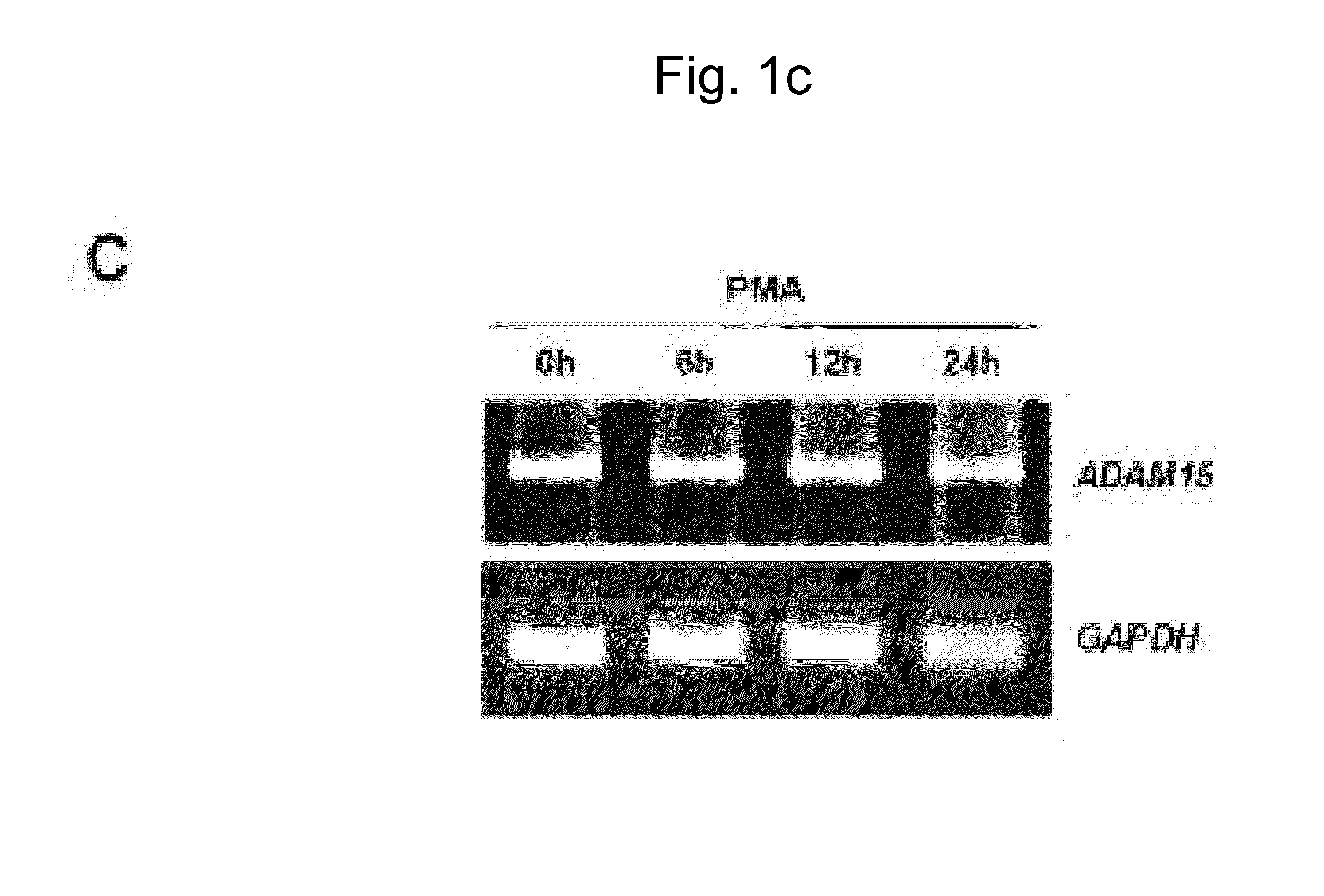Method for preparing microvesicular adam15
a technology of adam15 and adam15, which is applied in the field of preparation of microvesicular adam15, can solve the problems of unclear understanding of the functional mechanism of adam15, and achieve the effects of reducing adhesion, proliferation, and reducing tumor cells
- Summary
- Abstract
- Description
- Claims
- Application Information
AI Technical Summary
Benefits of technology
Problems solved by technology
Method used
Image
Examples
Embodiment Construction
1. Materials and Methods
1.1. Materials
[0052]Mouse monoclonal anti-ADAM15 extracellular domain antibody (MAB935) was purchased from R&D Systems (Minneapolis, Minn.). Mouse monoclonal antibodies specific to integrin αvβ3 (MAB1976Z), integrin αv (MAB1930), integrin α5β1 (MAB1969), integrin β1 (MAB1965), integrin β3 (MAB1932), and glyceraldehyde 3-phosphate dehydrogenase (GAPDH) (MAB374), as well as rabbit polyclonal anti-ADAM15 cytoplasmic domain antibody (AB19036) were purchased from Chemicon (Temecula, Calif.). Mouse monoclonal anti-CD11b (FCMAB178P) was purchased from Millipore (Billerica, Mass.). Mouse monoclonal antibodies specific to CD9 (sc-13118), TSG101 (sc-7964), ADAM10 (sc-28358) and ADAM15 (sc-73686) were purchased from Santa Cruz Biotechnology (Santa Cruz, Calif.), and mouse monoclonal anti-E-cadherin (BD610181) was purchased from BD Biosciences (San Jose, Calif.). PMA (P1585) was purchased from Sigma-Aldrich (St. Louis, Mo.).
1.2. Expression Plasmids and Site-Directed Muta...
PUM
| Property | Measurement | Unit |
|---|---|---|
| size | aaaaa | aaaaa |
| size | aaaaa | aaaaa |
| pH | aaaaa | aaaaa |
Abstract
Description
Claims
Application Information
 Login to View More
Login to View More - R&D
- Intellectual Property
- Life Sciences
- Materials
- Tech Scout
- Unparalleled Data Quality
- Higher Quality Content
- 60% Fewer Hallucinations
Browse by: Latest US Patents, China's latest patents, Technical Efficacy Thesaurus, Application Domain, Technology Topic, Popular Technical Reports.
© 2025 PatSnap. All rights reserved.Legal|Privacy policy|Modern Slavery Act Transparency Statement|Sitemap|About US| Contact US: help@patsnap.com



